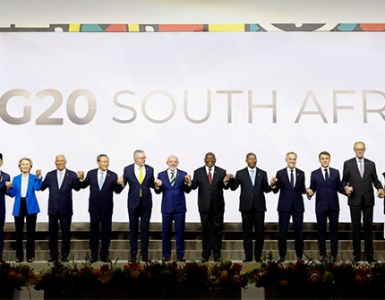RECONCILIATION: Culture and contradictions – the unresolved legacies of the country’s past…
By Mokone Molete
More than three decades ago, South Africa entered a historic new phase. The adoption of a democratic Constitution and the country’s first all-inclusive elections in 1994 promised to replace centuries of oppression with a future shaped by the French Revolution ideals of Liberté, Égalité, Fraternité (liberty, equality, fraternity).
Archbishop Desmond Tutu’s description of South Africa as a “rainbow nation,” borrowed from Jesse Jackson’s “rainbow coalition,” captured the spirit of that moment.
As part of the new nation-building effort, the government wanted to invoke the spirit of ubuntu and as part of a wider project, introduced a set of public holidays: Human Rights Day (21 March), Freedom Day (27 April), Heritage Day (24 September), and the Day of Reconciliation (16 December).
These were intended not merely as days of rest but as symbolic milestones, intended to foster unity and encourage the remembrance of our shared history. They joined other significant dates — such as Youth Day (16 June) and International Women’s Day (8 March) — and were framed as part of a broader reconciliation project that included the Truth and Reconciliation Commission (TRC).
Yet, three decades on, many of these holidays reveal persistent contradictions and divisions. Rather than serving as unifying symbols, they often expose the unresolved legacies of South Africa’s past.
The Constitution of 1996 is widely celebrated as one of the most progressive in the world. However, it is important to remember that some of those who participated in its drafting were part of the very system it aimed to dismantle.
In many respects, the Constitution preserved entrenched privileges and economic interests of the old order, leaving the material expectations of the poor largely unmet. The ANC’s longstanding commitment to the Freedom Charter (1955) — which promised equal rights for all — often constrained it to make compromises that appeared noble on paper but left the structural inequalities of apartheid largely intact.
This paradox between the celebrated progressiveness of the Constitution and its failure to fundamentally redress economic and social disparities remains one of the country’s deepest challenges.
March 21, now known as Human Rights Day, marks one of the darkest moments in South African history: the 1960 Sharpeville Massacre, where police opened fire on a peaceful protest against pass laws, killing 69 people.
Renaming the day to celebrate human rights was meant to signal a new era, yet it also illustrates the contradictions of the transition. No one was ever held accountable for the massacre. For survivors and their families, the day remains one of grief and unfinished justice.
Public commemorations often ring hollow. Politicians give speeches about dignity and democracy, but for many in the townships where poverty and inequality persist, Human Rights Day is a reminder of how far the promise of 1994 remains unfulfilled.
Instead of being a day of triumph, it might more honestly be observed as a solemn national memorial to the cost of freedom.
Heritage Day: whose heritage?
Of all the new public holidays, Heritage Day perhaps best illustrates the complexity of post-apartheid identity. The holiday originated in KwaZulu-Natal as King Shaka Day, honouring the Zulu leader who unified disparate clans. Its transformation into a national holiday during constitutional negotiations was in part a political compromise with the Inkatha Freedom Party.
Similarly, 16 December, now the Day of Reconciliation, was once Dingaan’s Day (later the Day of the Vow), celebrated by Afrikaners to mark their 1838 victory over the Zulu at the Battle of Blood River. In renaming it, the government sought to transform a divisive commemoration into a unifying one.
Yet Heritage Day raises an uncomfortable question: whose heritage is being celebrated? South Africa’s past is not a single shared story but a layered and often conflicting disposition. Some argue that the only heritage common to all South Africans is a history of inequality and oppression — a legacy that persists in today’s economic structures, where the majority remains marginalised and a small black elite has joined the ranks of privilege.
Commercialisation of heritage
The tension over Heritage Day became even clearer when marketers rebranded it as “Braai Day”, a move famously endorsed by Archbishop Tutu. Retailers and food chains capitalised on the holiday, turning it into a commercial event that prioritised consumption over reflection.
In addition, the way South Africans present their “traditions” on this day often reveals more about the legacies of colonialism than about pre-colonial culture. Much of what is worn as “traditional attire” — from patterned cloths to beadwork — entered local use through colonial trade.
The incongruity becomes sharper when one observes women in “traditional” dress accessorised with imported wigs, acrylic nails, and European-style cosmetics. Far from symbolising timeless heritage, these hybrid presentations highlight South Africa’s complex cultural evolution and the lingering tensions between identity, modernity, and history.
Changing perceptions
When these holidays were first introduced in the 1990s, they were embraced with cautious optimism. They symbolised hope for a shared future. Over time, however, that optimism has faded.
Surveys and anecdotal evidence suggest that younger South Africans, particularly those born after 1994, often view these commemorations as either empty political rituals or simply as long weekends. For many, they no longer inspire the sense of unity once envisioned.
This generational shift reflects a deeper issue: symbolic gestures, no matter how well-intentioned, cannot substitute for tangible improvements in people’s lives. Where poverty, inequality, and unemployment persist, public holidays can feel like state-mandated performances rather than authentic expressions of national solidarity.
Pragmatism
The shortcomings of these holidays do not mean we should abandon the ideal of national unity. Rather, they suggest the need for more honest and pragmatic approaches.
As one of my teachers used to say: “Let everyone go to hell in their own way.” In the South African context, this means allowing diverse communities the freedom to commemorate their own histories — provided these celebrations do not glorify past or present injustices — while finding new, inclusive ways to honour the values of democracy and reconciliation.
There is a precedent for such pragmatism. Before 1994, when it was illegal to commemorate 21 March or 16 June, one progressive insurance company quietly allowed employees two paid days off each year to observe the days that mattered to them, without requiring explanation. This small act of respect for personal conscience arguably achieved more genuine inclusivity than state-imposed symbolism.
Lessons
South Africa’s struggle to use public holidays as tools for unity is not unique. In the United States, for example, the establishment of Martin Luther King Jr. Day in 1983 was initially resisted in some states and only gradually came to be recognised as a unifying national observance. In Rwanda, Kwibuka (the annual commemoration of the 1994 genocide) shows that remembrance can be solemn and nation-binding when it confronts painful truths directly.
These examples suggest that public holidays can contribute to unity — but only when they are rooted in authentic engagement with history, rather than in political compromise or commercial reinvention.
South Africa’s public holidays were conceived as instruments of reconciliation and shared identity. Three decades later, they reveal not just progress but also the deep fault lines in the national psyche.
To transform them into genuine unifying symbols, we must confront uncomfortable truths about our history and present. This requires moving beyond hollow slogans and commercialised festivities toward inclusive, respectful forms of commemoration that acknowledge the diverse stories that make up South Africa. Unity cannot be built on denial or on marketing campaigns. It must be grounded in the honest recognition of the past and the tangible improvement of lives in the present. Only then will the idea of the rainbow nation feel like more than a slogan — and become a lived reality.





























